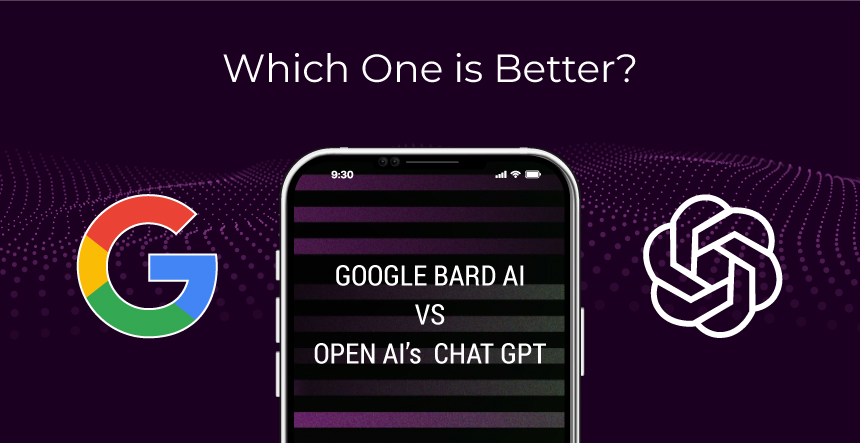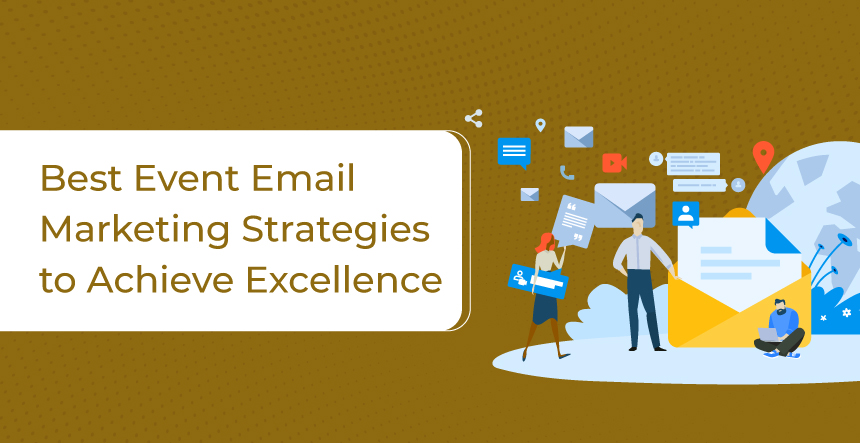
The term ‘Buyer Persona’ has become popular over the past few years; however, only a few marketing professionals understand this term. A Buyer Persona represents the behaviour of the target customer of a company or business and enables a business owner to build an effective marketing strategy or make productive changes to their earlier decisions.
What is a Buyer Persona?
A buyer persona is also known as customer persona or marketing persona. It is possible to clearly understand the demands of target customers if you understand the buyer persona. With this understanding, you can do a better job at serving or acquiring the customers. Hence, it is lucrative for all business persons to have a clear understanding of the Buyer Persona.
According to HubSpot,
A buyer persona is a semi-fictional representation of your ideal customer based on market research and real data about your existing customers.
You cannot be certain about the success of the marketing messages or the impact of the offers (presented by your company) on the target customer until you understand the Buyer Persona which is either based on considerable research or on real customers. It is important to remember that you may have to consider more than one ‘Buyer Persona’ if your product/service is suitable for different types of target customers. In this scenario, you have to create separate buyer personas for each type of customer in order to make an effective strategy.
Understanding of the Buyer Persona is equally important for online marketing, as you can customize the blog posts, sales-pages or e-mails depending upon the type of the Buyer Persona. The conversion rate of your website may even increase due to this reason. Hence, you may witness an improvement in SEO alongside noticing an increase in sales and customer retention if you can create ‘Buyer Persona’ based upon the unique features of your business.
Why Buyer Persona is Important for your Business?

You may know who the target customers of your business are. However, you may not know about their specific interests, needs or about the distinctive background of target customers.
You can have that understanding once you develop an effective ‘Buyer Persona’ for your business which depends upon two vital factors – insights gathered from the actual customer base and extensive market research. You can gather insights about the target customer through interviews or surveys.
The number of ‘Buyer Personas’ varies from one business to another. For example, your business may need to develop a few or numerous ‘Buyer Personas’ depending upon the types of target customers. It is prudent to keep the number of ‘Buyer Persona’ limited if you are new to this.
How Can Personas be used in Marketing?

The ‘Buyer Personas’ are created based upon the unique requirements or characteristics of a business. Therefore, it gives you the opportunity to create unique content/messages capable of appealing the target audiences of your business. Using ‘Buyer Persona’, you can also personalize the marketing strategies for different types of audiences associated with your business.
For example, sending lead-generating e-mails is no longer considered to be lucrative. Sending personalized e-mails or messages is considered to be more fruitful.
If you have segmented ‘Buyer Persona’, then you can personalize the messages depending upon your knowledge about different personas. This particular strategy is going to leave a better impact on the target audience. It is possible to develop this strategy using ‘Buyer Persona’.
The ‘lifecycle stage’ is determined by the buying journey of contact. It represents how far someone has moved into the ‘sales cycle’. If you combine the ‘lifecycle stage’ with the ‘buyer persona’, then you can create ‘targeted content’ to drive a specific response from a niche audience.
It is important to remember that building a ‘negative buyer persona’ is equally important for the inbound marketing strategy of a business, as it enables you to find out the less than ideal customers. You may notice an increase in sales productivity with this added effort.
How to Create Buyer Personas

It is possible to create ‘Buyer Personas’ through research, interview of target customers and conducting surveys. When conducting a survey/interview/research, it is essential to include a mix of prospects and customers. It is equally essential to consider those who may not be included in the contacts database of your business; however, may align with the target audience.
Developing Buyer Persona – Practical Methods of Gathering Data
- You can discover how some customers/leads find your content whilst looking at the contacts database.
- Form fields can capture important data with regards to the persona. You may use these data when creating forms.
- You may take into consideration the feedback of the sales’ team. They can inform you regarding the leads with whom they mostly interact.
- You can also gather important data after interviewing the customers or prospects. This interview may be conducted either in person or over the phone. Through this interview, you can learn about the products or services preferred by the various individuals.
Finding Interviewees when Researching for Buyer Personas
The interview is an important part of developing ‘Buyer Personas’, as it enables you to learn what drives the target audience. However, you have to find suitable interviewers before conducting interviews. The following tips can help you find the interviewers who can help you during the research.
- Customers: Your customers have already purchased your product or have availed service from your company. Therefore, it is the best place to start an interview. It is essential to interview both ‘desirable’ and ‘less-than-desirable’ customers if you want to have a clear picture regarding the Buyer Personas, as unhappy customers can show other patterns that are not available through satisfied customers. For example, you may find out that some customers are dissatisfied because they did not find the products to be user-friendly. Therefore, you can learn something about your product and the challenges experienced by dissatisfied customers after talking to them. It is important to remember that all types of customers like to be heard. Hence, you may not have to offer any incentive, such as gift cards, in order to interview the customers. This interview does not help you develop ‘buyer personas’ or learn what they think about a product. You can also have loyal customers after this interview, as the customers like to leave an impact on the products of their choice.
- Prospective Customers/Clients: You already have the contact information of the leads and current prospects. Therefore, it is not difficult to interview prospective buyers/customers who may be interested in your products or services. You may gather information regarding the prospects using the lead generation forms or website analytics in order to figure out who may be suitable for the target personas.
- Getting Interviewees through Referrals: If you are new to the market and have no leads or customers, then you may need to depend upon the referrals of existing customers, co-workers or social media contacts in order to find suitable interviewees who fit into your target personas. It may be difficult finding interviewees in this process. However, this type of interview may produce a quality result.
- Third-Party Networks: You may even use third party networks to find interviewees who are not associated with your product or service in any way. There are some reliable online platforms that can be used in order to locate reliable interviewees. However, you may not have a lot of control over how the interviews are being conducted.
Questions to Ask During Interviews
If you do not know what appeals to your customers, then you cannot develop accurate Buyer Personas. The following questions may help you find the data that can be used in order to build correct Buyer Personas.
Personal Questions
- What is the age and gender of a buyer?
- Whom does a buyer live with?
- What is the household income of a buyer?
- What is the living environment (urban/suburban/rural) of a buyer?
- How does a buyer spend his/her time?
- Who or what influences a buyer’s decision in a particular sector?
- What does a buyer enjoy reading?
- Which activity is mostly preferred by a writer?
Questions Related to Profession/Qualification:
- What is the buyer’s level of education?
- What type of vocational activity is performed by a buyer?
- What is a buyer’s designation or role in a company?
- What types of challenges are witnessed by a buyer in a work environment?
- What is the career goal of a buyer?
- How is success defined by a buyer at the workplace?
- What are the basic objections of a buyer or his/her biggest worries?
- How can your services/products resolve a buyer’s issues or challenges?
- Is a buyer tech-savvy or not?
- Which social networks or modes of communication are preferred by a buyer?
Creating Own ‘Buyer Persona’ Based on Research

The time to develop Buyer Personas for your business starts once you have received answers to all pertinent questions or have gathered important information through the research. You have to develop at least a primary persona and have to share it with the rest of the people in your company. It enables you as well as other individuals of your company to understand the individuals they target every day as clients or customers.
The following steps may help you create a persona template.
Fill in Demography-Oriented Basic Information
It is possible to collect demography-oriented information through in-person or over-the-phone interviews. It is important to remember that some individuals may be comfortable disclosing information on demographic related questions through an online survey instead of verbal communication. Hence, an online survey may be another effective way to collect demography-oriented information.
It may be helpful to include some mannerisms or buzzwords of your persona when filling in the demography-based information. It enables the sales personnel to quickly identify certain personas when establishing contact with the prospects.
Share Information with Team on what Motivates a Persona
At this step, you have to distil the information you have received during the interview. For example, what keeps a persona up at night or whose company is enjoyed mostly by a persona? It is equally important to put all the data together and tell personas how your services/products may help them.
Prepare Sales Team for Conversation with Personas
You may include a few quotes from interviews to exemplify details about your personas. For example,
- Who are your personas?
- What do they want?
- What are your personas are concerned about?
You may even create a list of possible objections that may be raised by a persona when communicating with the sales team enabling the sales personnel to be prepared in order to address these issues.
Tailored Messaging for Personas
If you want to make sure that everyone in the company is conversing with the leads and customers in the same manner, then you have to tailor the messages for the personas. When crafting messages for the personas, you have to pay attention to the formation of the elevator speech/statement in order to ensure that the speech resonates with your persona.
Lastly, you have to put a name and image (purchased from stock photograph sites) to the persona. It enables everyone in your company to understand what a personality may look like or how the persona may act like.
Conclusion
Once you analyze trends, similarities, behaviours and common patterns of your target audience, you can develop a sales or marketing strategy around their needs, objectives, challenges and dissatisfactions. This is the main objective of developing Buyer Personas. You can also create prospect/customer-orientated content and campaigns for marketing using the buyer personas. You can also encourage the customers/prospects to feel more engaged with your business.
A buyer persona is a vital aspect of any marketing strategy if you want to retain the interest and trust of current or prospective customers. Hence these suggestions can help you develop Buyer Personas and enable you to serve buyers and prospects with greater efficiency. Beyond all these, if you still face any difficulties in such jobs, feel free to reach out KrishaWeb Inbound Marketing Team.
Thank You…












